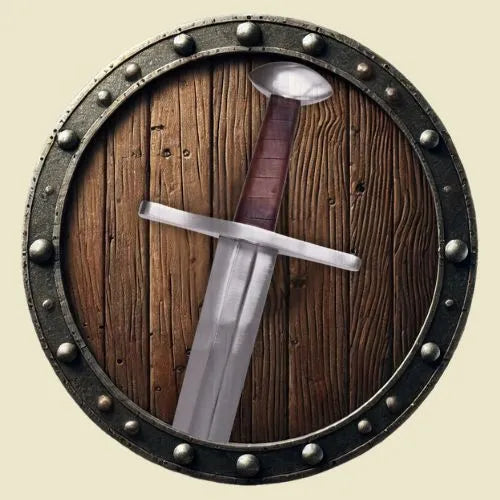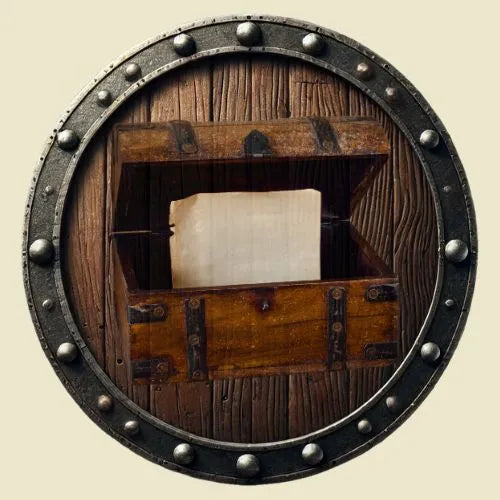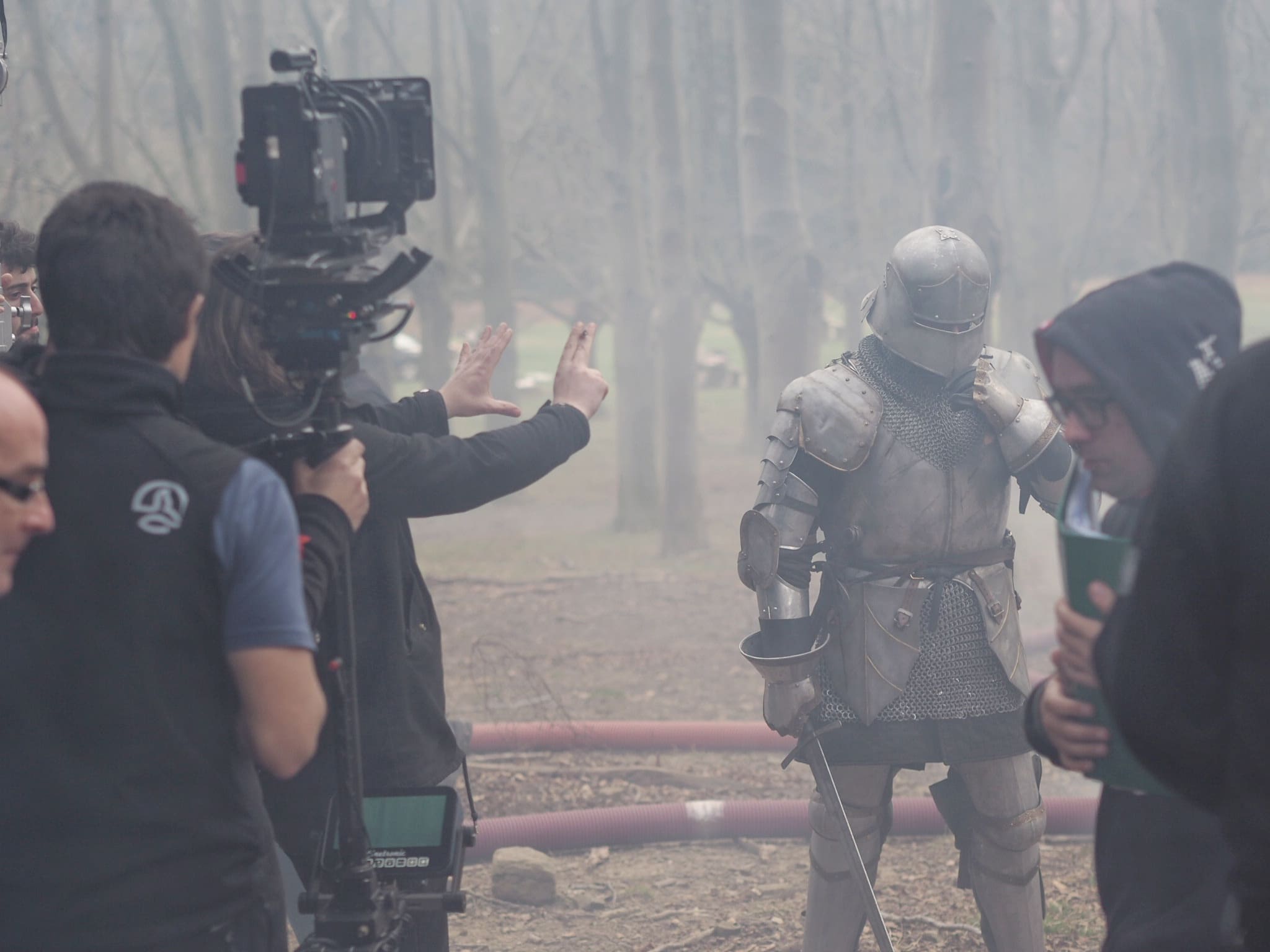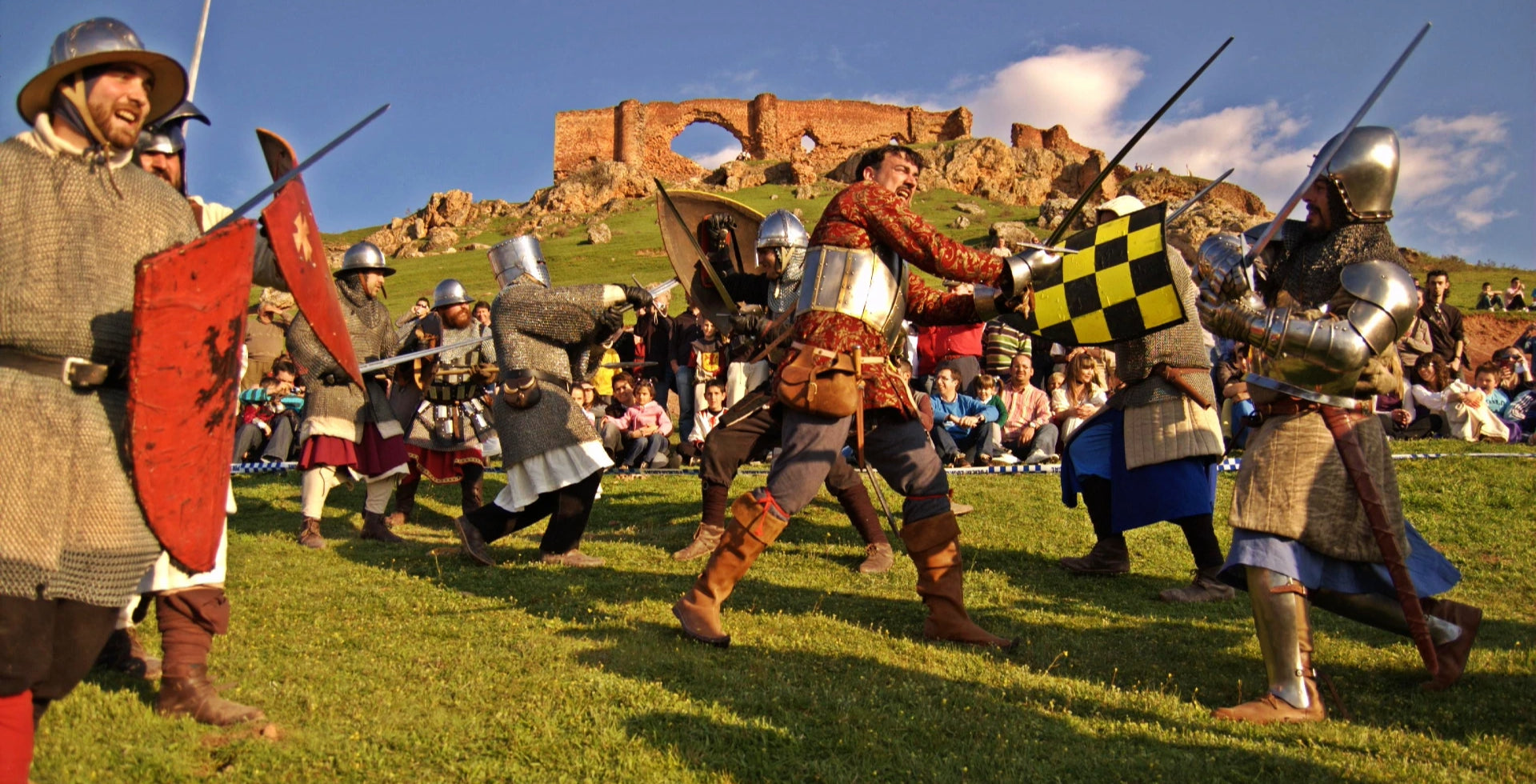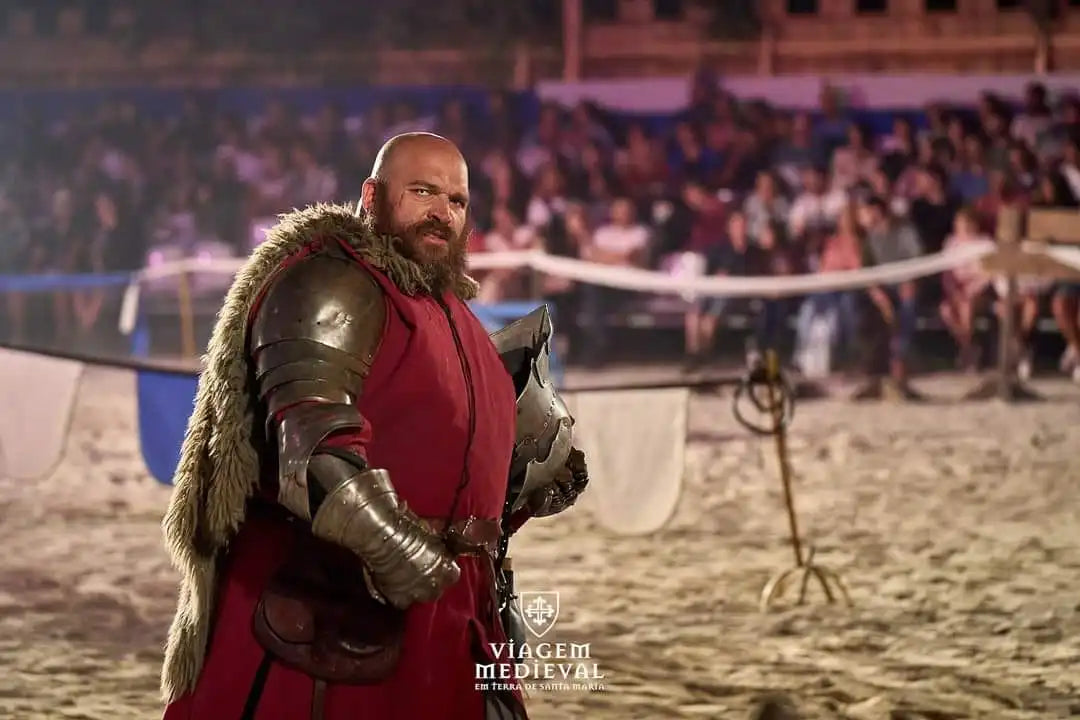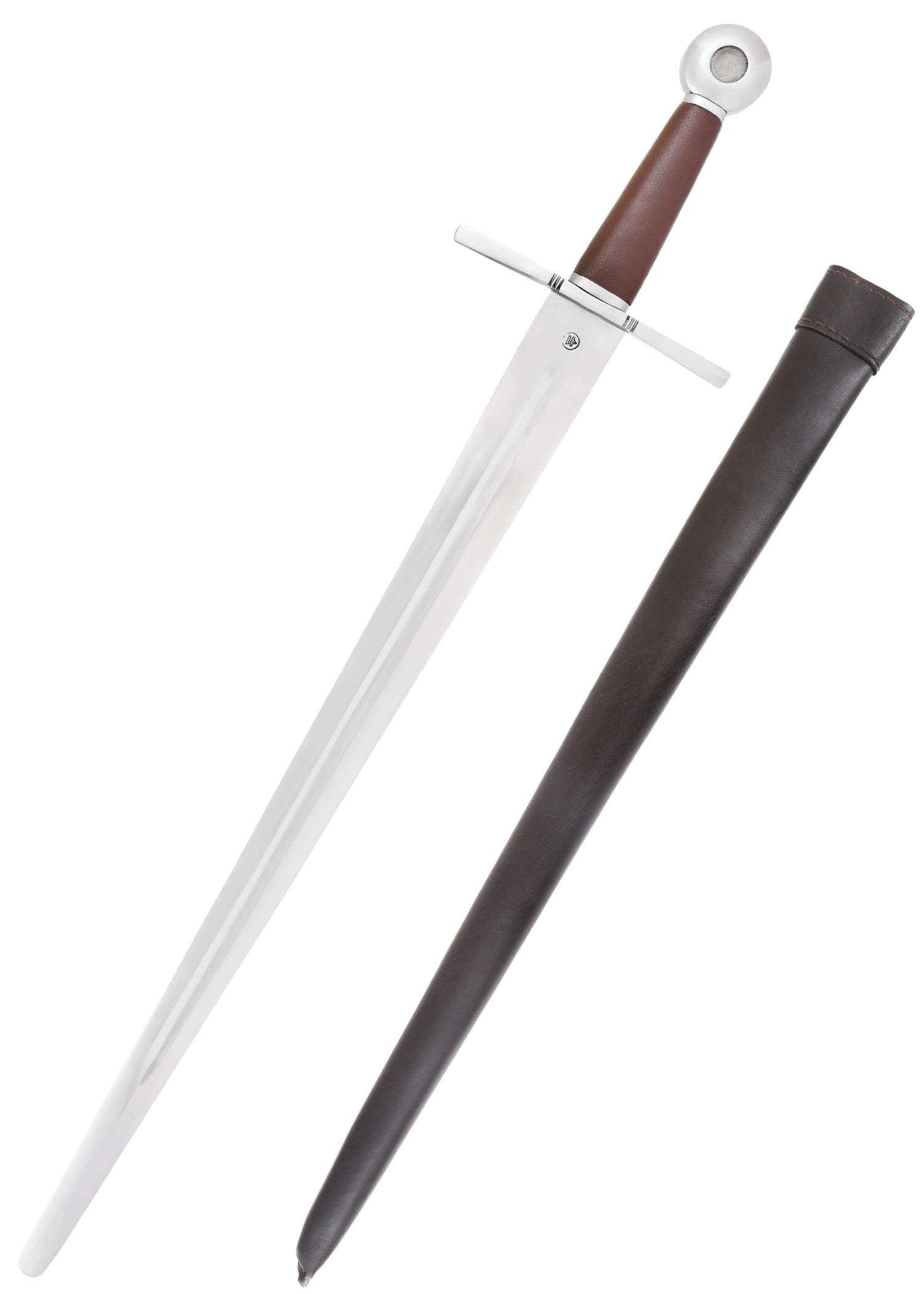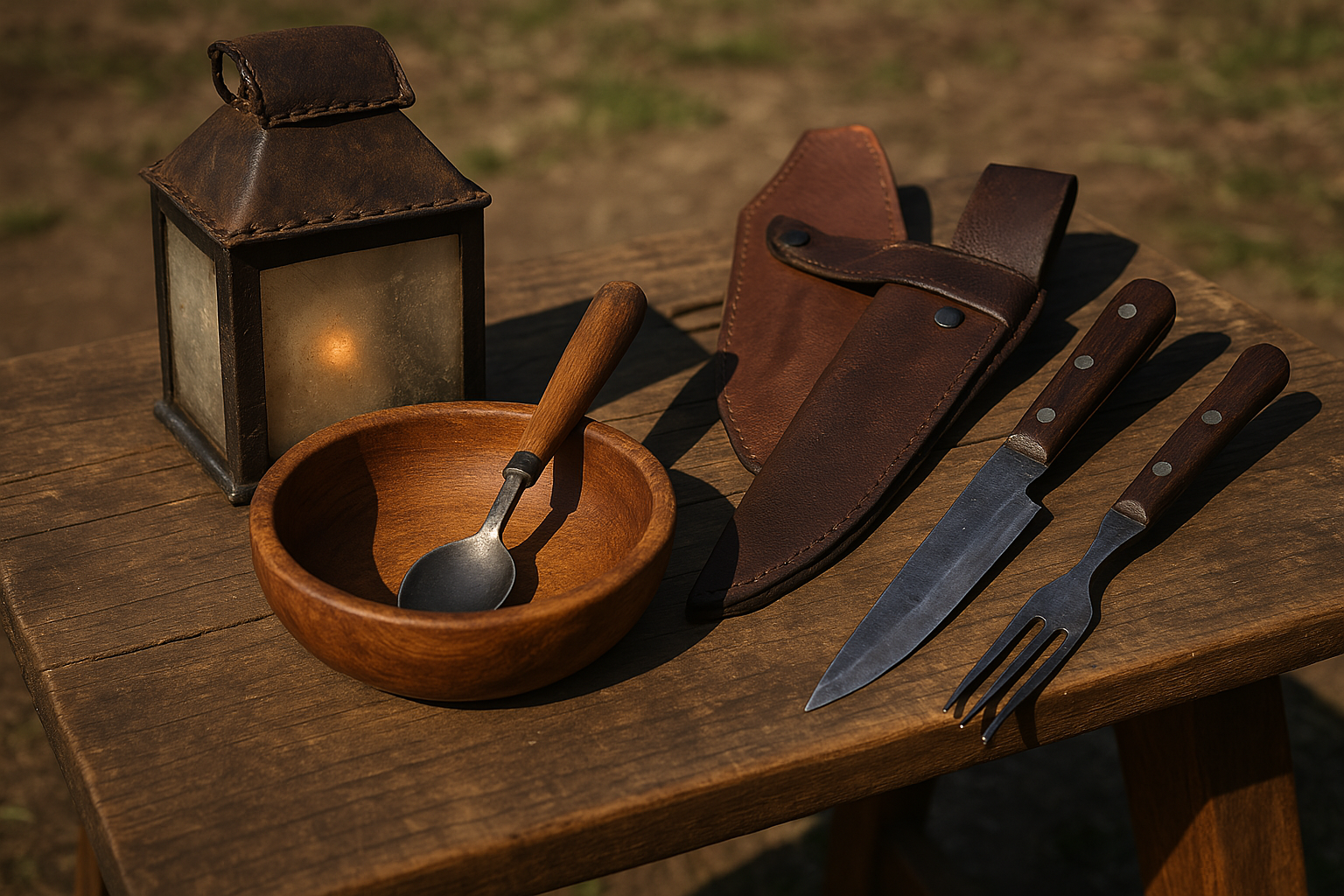Discus Pommel Sword: A High Medieval Jewel for Authentic Warriors
The High Middle Ages, also known as the Dark Ages, was a fascinating period marked by constant struggle, emerging kingdoms, and legendary warriors. Among the most iconic weapons of this era, the discus-pommeled sword undoubtedly stands out, a true jewel of war whose functional and aesthetic design made it a favorite of warriors and nobles for centuries.
History and Origin of the Discus Pommel Sword
Early medieval swords began to gain popularity around the 9th and 10th centuries, a time when Europe was undergoing profound political and social transformation. Also known as Viking swords, due to their frequent association with Norse warriors, these weapons were particularly notable for their circular or disc-shaped pommels, characteristic of early medieval weaponry.
The discus pommel was not merely decorative, but a crucial element in the sword's construction and balance. This type of pommel facilitated a better grip, greater maneuverability, and provided optimal balance for combat. Early medieval swordsmiths refined this design until it became the standard among one-handed swords used by both knights and foot soldiers.
Features and Craftsmanship
At Tienda Medieval, we offer accurate replicas suitable for combat and display, like the discus pommel sword we're reviewing today. Each of these pieces is created entirely by hand, respecting traditional methods and striving for historical accuracy that transports us directly to the 9th or 10th century.
This specific replica measures 85 cm long and weighs approximately 1.50 kg, perfect dimensions that faithfully replicate the original balance and maneuverability of these swords. It is forged from high-quality steel, hardened using the traditional oil-tempering method, providing exceptional hardness, elasticity, and impact resistance.
The manufacturing process involves meticulous craftsmanship. The steel is forged all the way to the hilt, ensuring that the blade and handle form a solid and durable piece. The end of the blade is then riveted directly to the pommel, providing stability and safety during use. The handle, meanwhile, is made of carefully shaped wood and covered in genuine leather, ensuring a comfortable and secure grip at all times.
Design and Functionality in Combat
The blade of this sword features a pronounced central fuller, a longitudinal groove that significantly reduces its weight, giving it remarkable lightness and flexibility. This feature was essential for facilitating rapid movements in combat, allowing warriors to perform accurate attacks and agile defensive maneuvers.
The blunt and rounded edges, along with the smoothed tip, make this replica an ideal weapon for both historical reenactment and safe practice in stage combat. The straight guard, also forged from steel, complements its robust and functional design, providing additional protection for the warrior's hands during close-quarters combat.
In addition, this sword comes with a genuine leather scabbard specifically designed to complement its medieval aesthetic, making it easy to carry and protecting the blade from damage.
Historical Context: Early Medieval Swords and Their Symbolism
During the High Middle Ages, the sword was more than just a weapon: it represented honor, prestige, and the very identity of the warrior. Its design evolved according to the military needs of the time, moving from heavy and unwieldy weapons to light and agile swords like this replica with a disc pommel.
The early medieval warrior placed great trust in his sword, which often became a family symbol passed down from generation to generation. Many of these weapons were adorned with engravings and personal symbols, turning them into true relics of lineage and bravery.
These swords also played a crucial role during the Viking invasions, characterized by swift raids and intense combat. The discus-pommeled sword, due to its effectiveness in close combat, was the preferred weapon in numerous historical engagements, allowing its wielders to excel in crucial battles that would shape the course of Europe for centuries.
Importance for Collectors and Historical Reenactors
Today, the early medieval discus pommel sword not only represents a tangible connection to our history but also a coveted piece for collectors and reenactment enthusiasts. Its detailed handcrafted reproduction ensures the authenticity necessary for medieval events, tournaments, or historical fencing demonstrations, offering its owners an immersive and realistic experience.
At Tienda Medieval, we strive to keep the spirit of the Middle Ages alive by providing exacting, historically accurate, and high-quality replicas, intended both for display in private collections and for active use in historical reenactments. Our discus pommel sword is a clear example of this dedication, uniting history, craftsmanship, and functionality in a single exceptional piece.
Conclusion
Whether for collectors, reenactors, or lovers of medieval history, the discus pommel sword represents a unique piece that encapsulates the warrior legacy of an age of myths, legends, and epic battles. Acquiring one of these swords is like reliving part of our historical heritage, preserving the essence of the early medieval warrior who once fought with honor and courage on the battlefields of Europe.

Visit us at the Medieval Shop to discover this sword and many other historical pieces that will delight any medieval enthusiast.

